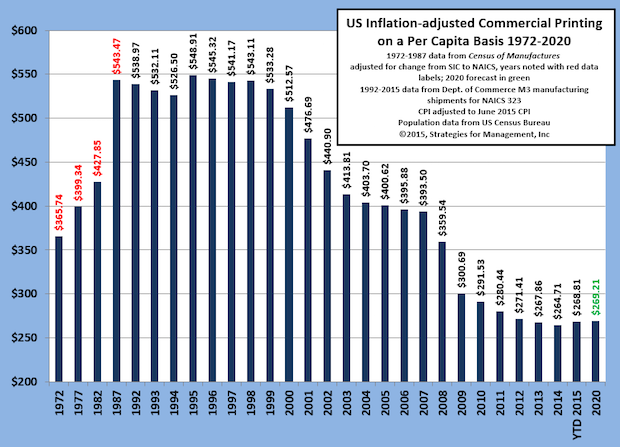
The per capita value of US commercial printing shipments has stabilized at nearly $270, and the recent change in the direction of shipments in the last year or so has changed the forecasts. Forecast models place heavy weight on recent history, and that fact has changed the forecast for 2020 to remain at current levels. It was not long ago that the models forecast 2020 consumption at near zero, an unlikely outcome, but one worth pondering. Will shipments stay at these levels? That's unlikely, too, as media formats and loyalties are still changing.
The chart shows an incredible history of technology and social change. The 70s through the 80s show the increase in print consumption that came from a growing economy and the sharp decrease in production costs for color printing. The growth in the 70s was despite harsh economic times, and despite punitive interest rates in the early 80s: yes, the decreases in costs and increases in productivity were so significant they could overcome both. Then the 90s rode an explosion in desktop capabilities and something new called “the Internet.” From there, the print world found itself in an unfamiliar arena of broadband, online video, podcasts, smartphones, social media, tablets, content marketing, and other devices and formats. Publishers have grappled with the problems of monetizing their content (supposedly “king” but far from it) in this environment for two decades, and many commercial printers became collateral damage. Some print businesses adapted their offerings and communicators adapted their tactics, resulting in the newfound stability. If this history tells us anything, it's to be wary and flexible, and especially vigilant about communications technologies and social changes that enable or thwart media use.














